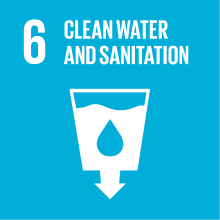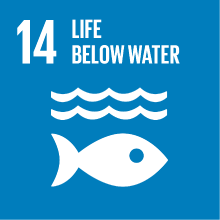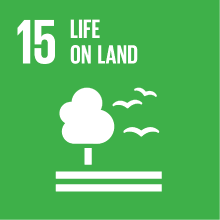EARTH SCIENCES: PRINCIPLES AND LABORATORY - 4 - LAB
- Academic year
- 2025/2026 Syllabus of previous years
- Official course title
- FONDAMENTI DI SCIENZE DELLA TERRA E LABORATORIO - 4 - LABORATORIO
- Course code
- CT0592 (AF:566440 AR:318186)
- Teaching language
- Italian
- Modality
- On campus classes
- ECTS credits
- 6 out of 12 of EARTH SCIENCES: PRINCIPLES AND LABORATORY
- Subdivision
- Class 1
- Degree level
- Bachelor's Degree Programme
- Academic Discipline
- GEO/02
- Period
- 2nd Semester
- Course year
- 1
- Where
- VENEZIA
- Moodle
- Go to Moodle page
Contribution of the course to the overall degree programme goals
Module 4 is a practical course designed to give a basic understanding of how to interpret topographic and geological maps. The module aims to develop the students’ skills of understanding geological processes and their evolution through time from their cartographic representation and in the field. The geological processes dealt in Module 4 through practical exercises are theoretically covered by Module 3, which is dedicated to the Earth System, with special emphasis on tectonism, volcanism, and processes operating on the surface of the Earth and the resulting landforms and features. The acquisition of skills in geological mapping is a distinguishing element of this course, as it enables future Environmental Science professionals to operate with greater autonomy in the collection, processing, and interpretation of spatial data. They will be able to read the "language of the territory" through maps, formulate precise environmental diagnoses, and contribute to solving complex problems that require a deep spatial understanding.
Expected learning outcomes
i) Demonstrate knowledge and understanding of the main cartographic systems and geographic projection methods.
ii) Read and interpret topographic and geological maps, integrating data from various sources.
iii) Recognize and classify diverse lithologies in the field, and relate them to their corresponding sedimentary depositional systems.
iv) Apply field methods for measuring geological features, such as bedding planes and fracture systems, using a compass and other standard tools.
v) Identify and interpret landforms as evidence of geomorphological processes (erosion, transport, deposition) within a broader environmental context.
vi) Distinguish between bedrock and Quaternary units and represent them following the conventions of geological cartography.
vii) Collect, describe, and document geological samples in the field, applying safe and appropriate sampling techniques.
viii) Communicate geological observations and interpretations clearly, both orally and in writing, using appropriate technical language and cartographic conventions.
ix) Reflect on the implications of geological data for environmental management, natural hazard assessment, and sustainable land use.
Pre-requirements
Contents
Topographic maps:
• Reference systems, projections, geographic and UTM grid coordinates;
• Elevation contour lines, steepness of slopes, planimetric and topographic distances, topographic profiles;
• Landscape description (natural and human constructed features) from topographic maps.
Geological maps:
• Definition of lithostratigraphic and chronostratigraphic units;
• Layout, symbols and legends of geological maps;
• Intersection of geological surfaces and topography (vertical, horizontal and dipping geological boundaries);
• Identification of folds and faults in geological maps;
• Identification of quaternary landforms and deposits in geological maps;
• Description of geological sections.
Activity in preparation to the fieldwork and field trip in the Venetian Prealps:
• Field equipment and risks associated to field work activities (Mrs. Flavia Visin);
• Determination of a cartographic point in the field;
• Identification of lithologies and geological units in the field;
• Identification of sedimentary and tectonic structures in the field;
• Geologic compass and measurements of geological surfaces;
• Identification and description of morphologies and quaternary deposits in the field;
• How to sample geological material and compile its own field book.
Referral texts
Sauro U., Meneghel M., Bondesan A., Castiglioni B., Dalla carta topografica al paesaggio: Atlante ragionato. IGM LAC, Firenze, 2011. ISBN: 9788879144513 e 9788879144520
Venturini, C., Rilevamento geologico: Dati di terreno, Carte, Sezioni, Relazioni. Zanichelli, 2023. ISBN: 9788808899927
Abbà, T., Conoscere la geologia del Veneto. Editore: Linea Grafica-Duck Edizioni, 2020. ISBN: 978-8889562833
Optional textbooks:
Bennison, G.M, Olver P.A., Moseley K.A., An Introduction to Geological Structures and Maps. Routledge, Taylor & Francis Group, London and New York, 2011. 8th Edition, 184 pages, DOI https://doi.org/10.4324/9780203783795 . eBook ISBN 9780203783795
Coe A.L. (Editor), Geological field techniques. Wiley Blackwell, 2010. ISBN: 9781444330618 e 9781444330625.
Assessment methods
Exam. Assessment strategy of Modules 3 and 4 will be carried out through written examinations (closed-book exams). a) Laboratory exam: the written/practical examination consists in an evaluation of the geological and topographic map understanding and of the field activities. b) Lecture exam: questions will be drawn from the topics and concepts that were covered during Module 3; exams will consist of open answer and multiple choice questions. A score ≥18/30 is required for both assessments. The final exam grade of Module 3+4 will be determined by integrating the results of the two assessments, with each component contributing equally (50%) to the overall mark.
Evaluation/Grading. Overall, examinations of Modules 1-2-3-4 will concur to the final mark of the entire course of “Earth Sciences: Principles and Laboratory”. The grades awarded for the assessments of Modules 1+2 and Modules 3+4 will remain valid for a maximum period of 12 months.
Type of exam
Grading scale
• 28-30 and Cum Laude (Excellent): The student demonstrates an excellent and in-depth mastery of all topics, along with the ability to critically analyze and connect different themes. Their presentation is clear, coherent, well-structured, and enhanced by an impeccable and appropriate use of scientific terminology.
• 26-27 (Very Good): The student possesses a solid knowledge of the topics. Their presentation is organized, comprehensible, and generally uses correct technical terminology.
• 24-25 (Good): Knowledge of the topics is satisfactory, though not always in-depth. The presentation is organized, but the use of technical terminology may show occasional inaccuracies.
• 22-23 (Fair): Knowledge of the topics is often limited and superficial, mainly focusing on basic aspects. The presentation is unclear and disorganized, with a limited and imprecise use of specific terminology.
• 18-21 (Sufficient): Knowledge is fragmented, with significant gaps that compromise the understanding of key concepts. The presentation is unclear, disorganized, and characterized by a scarce or inappropriate use of technical terminology.
Teaching methods
This course will be taught in the classroom in a lecture format along with laboratory exercises. The lecture and lab sessions will complement each other, but the lecture focus on general geological mapping topics, while the lab exercises will show the students how to apply that knowledge in practice. The laboratory session of Module 4 is closely tied to the lecture of Module 4, and in the lab the students will learn to make observations and directly experience many of the principles addressed in lecture.
This will be followed by a one-day field trip in the Venetian Prealps; together with the field trip organized during Module 2 in the Euganei Hills, the field activity will give students “hands-on” experience with materials and concepts introduced during lectures. These field trips offer students the opportunity to directly observe geological features and processes in real-world contexts and are designed to reinforce the geological knowledge acquired during lectures and laboratory sessions.
The lectures and the supplementary materials for practical exercises and field excursion (e.g. topographic basemaps) will be available in pdf format on the University Moodle platform. In addition, the Geology/Mineralogy Laboratory of the Department has a rich collection of national geological and topographic maps that can be used in preparation to the examination.
Further information
Accommodations and Support Services for Students with Disabilities or Specific Learning Disorders
Ca’ Foscari complies with Italian law (Law 17/1999; Law 170/2010) regarding the support services and accommodations available to students with disabilities or specific learning disorders. If you have a motor, visual, hearing, or other disability (Law 17/1999), or a specific learning disorder (Law 170/2010), and require support (such as in-class assistance, technological aids for exams or individualized exam arrangements, accessible-format materials, note-taking support, specialized tutoring, interpreters, or other services), please contact the Disability and SLD Office at: disabilita@unive.it.
2030 Agenda for Sustainable Development Goals
This subject deals with topics related to the macro-area "Natural capital and environmental quality" and contributes to the achievement of one or more goals of U. N. Agenda for Sustainable Development



